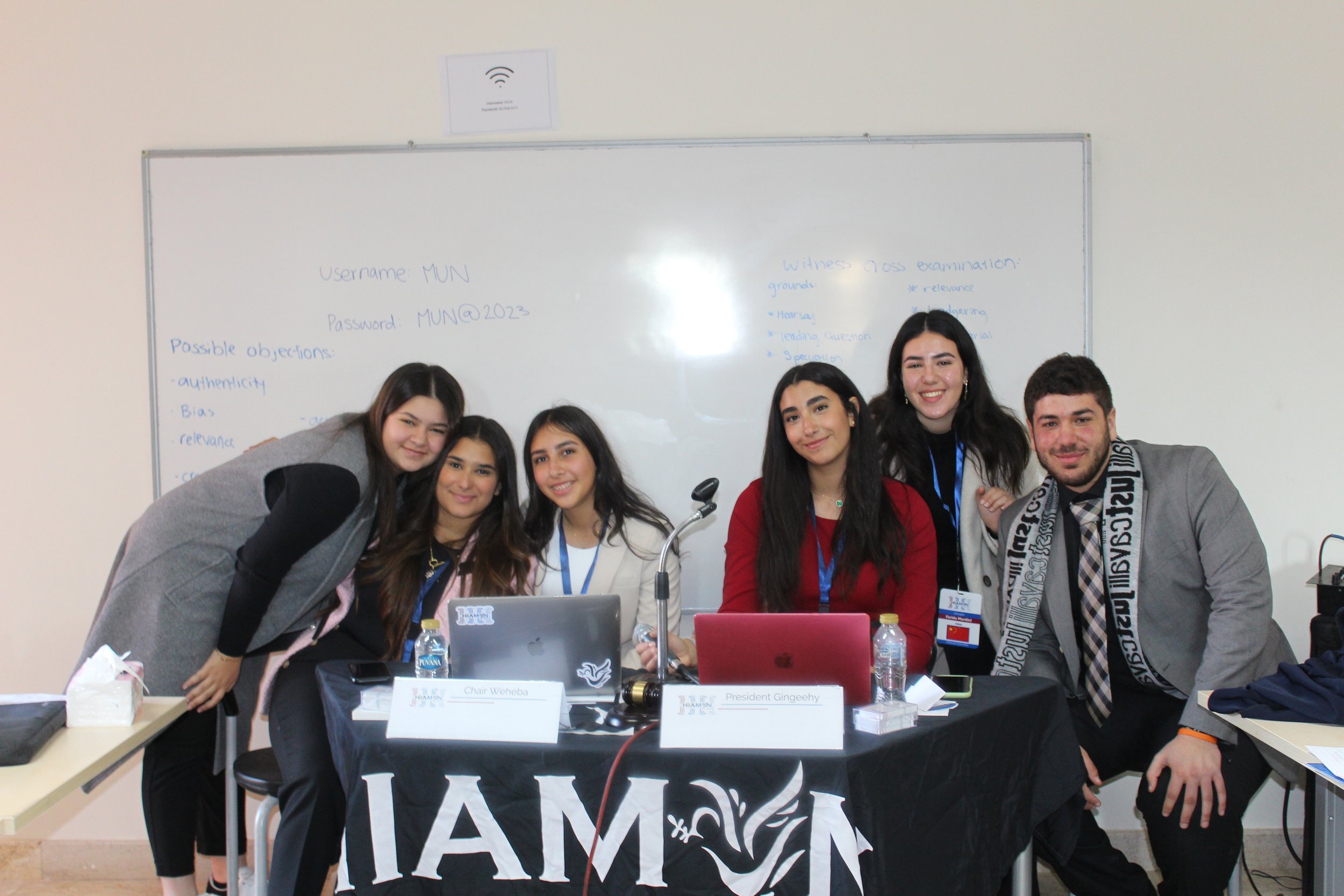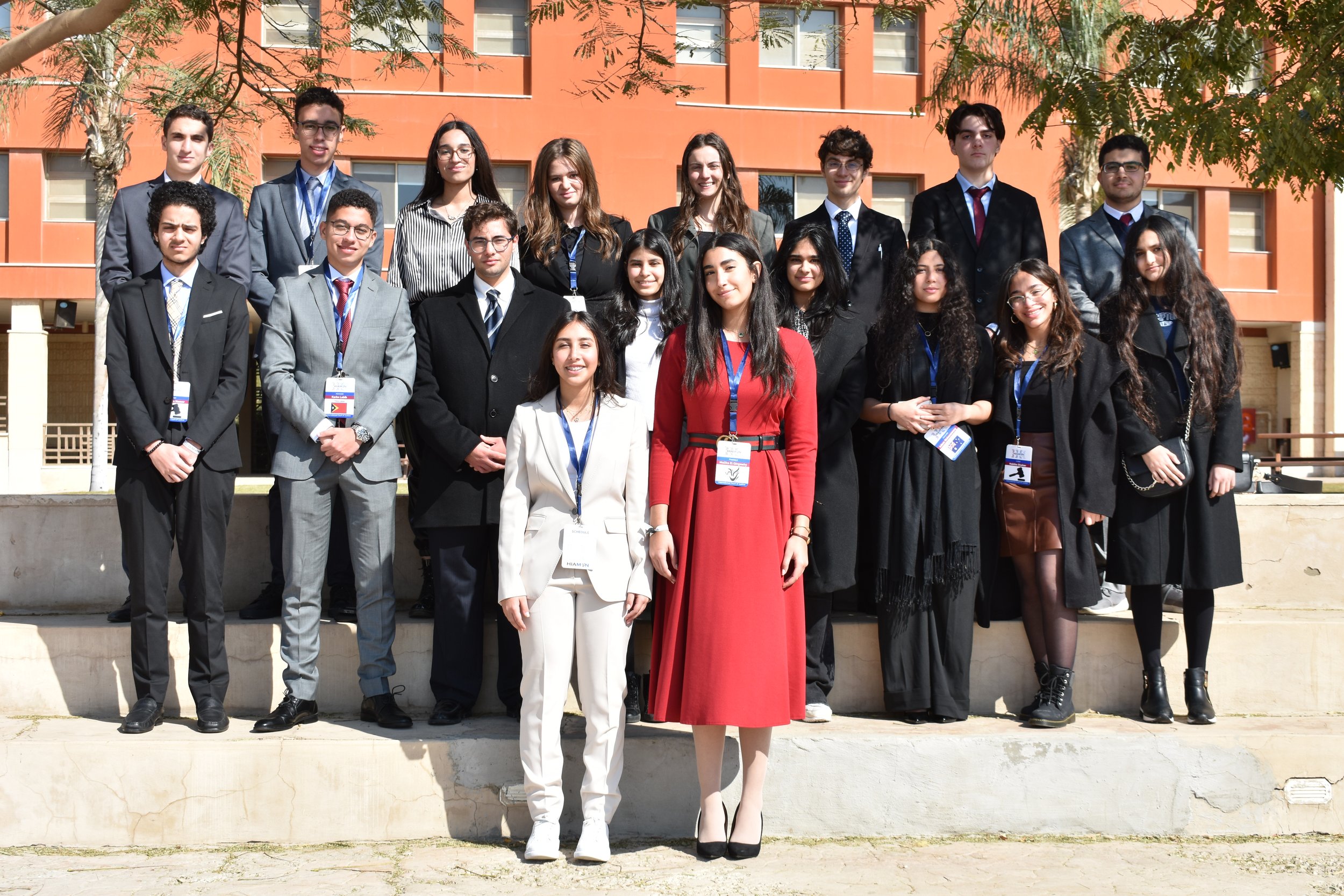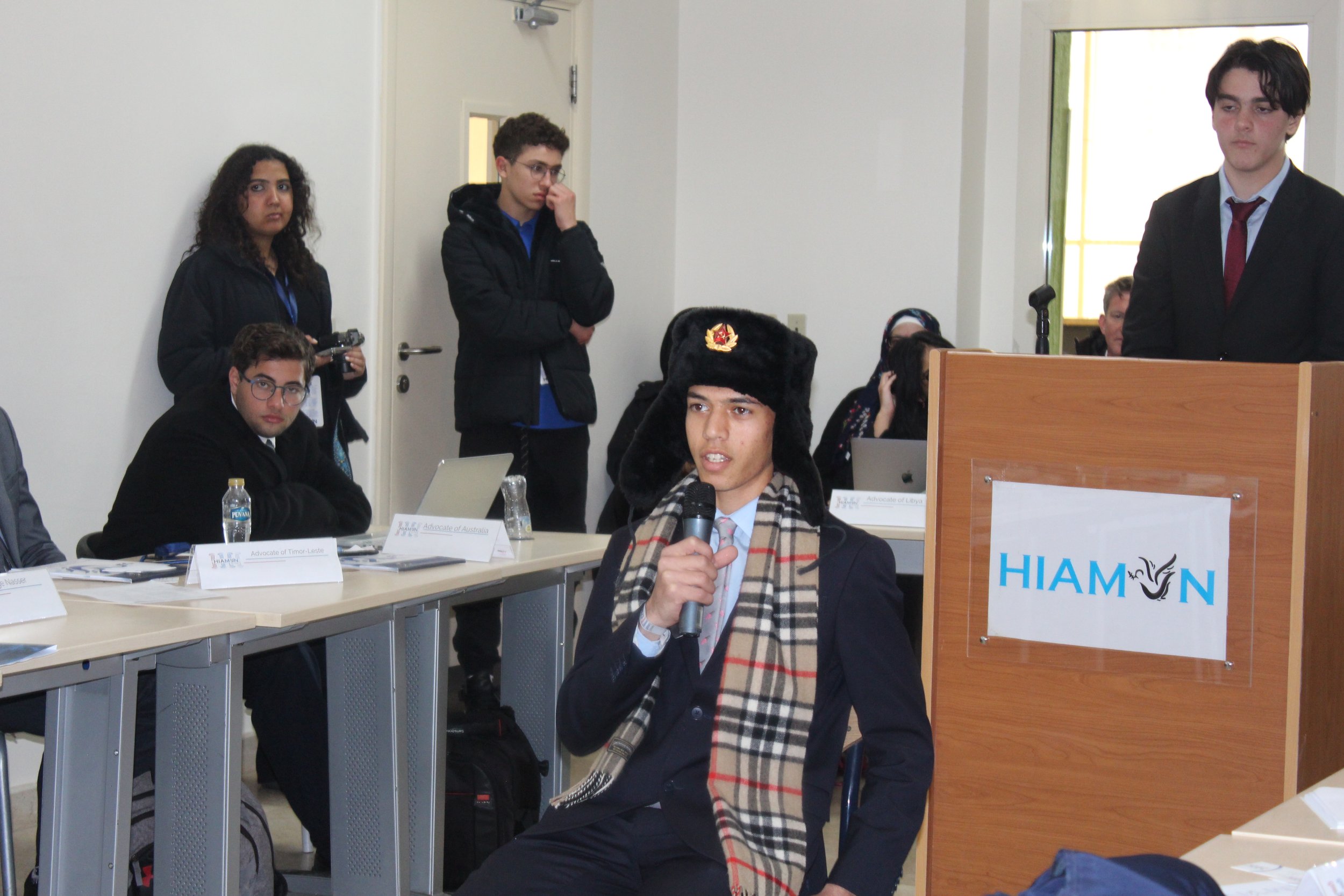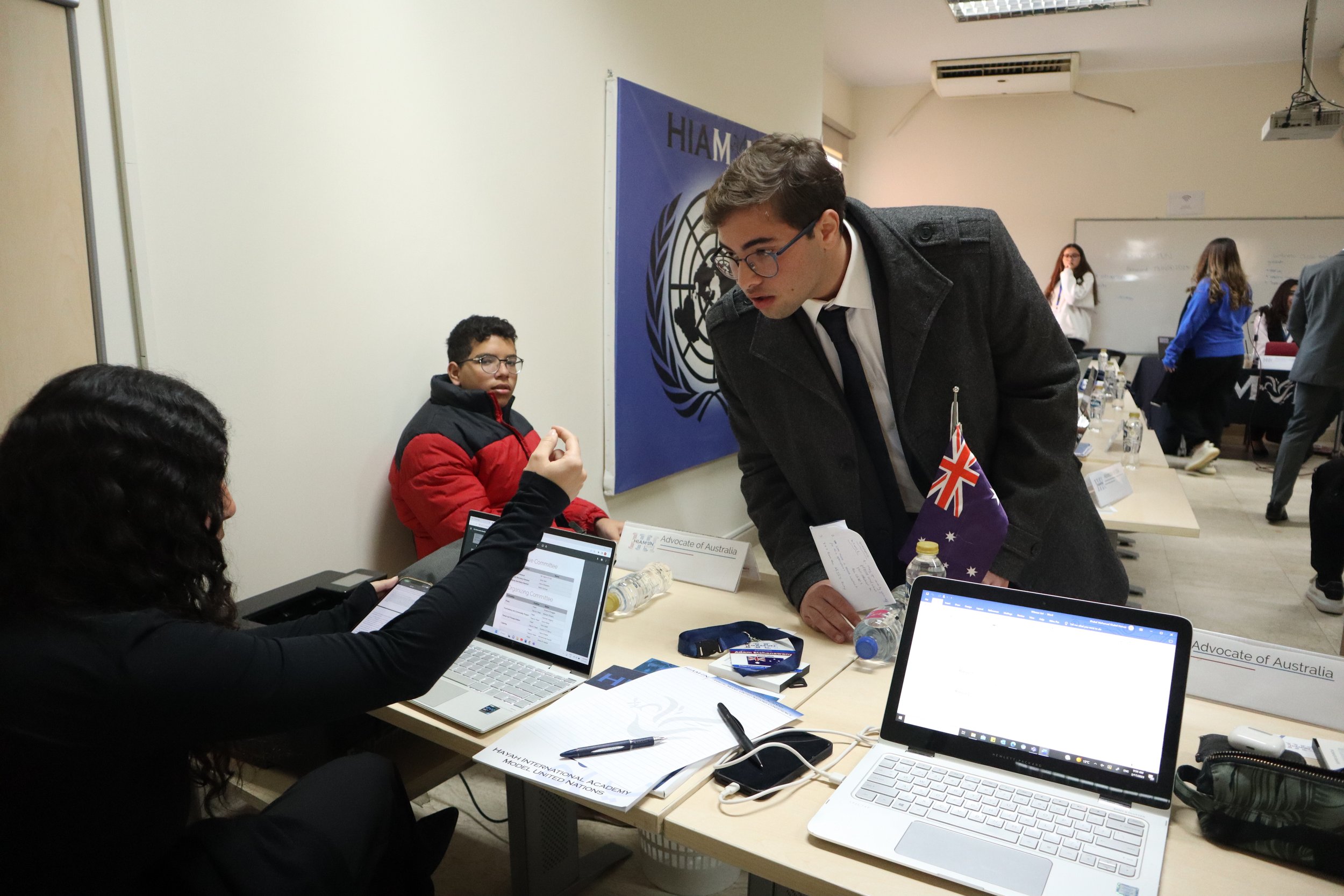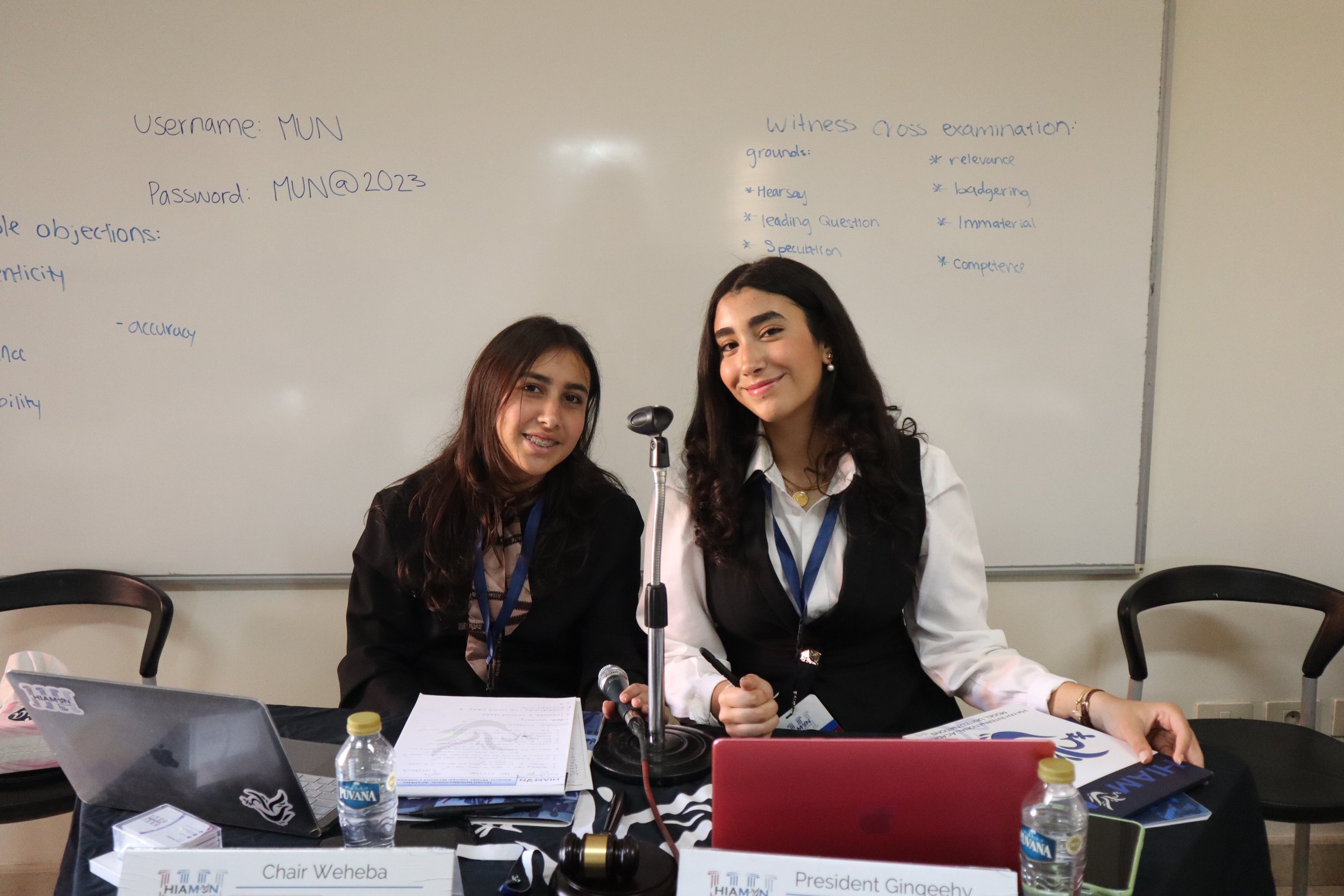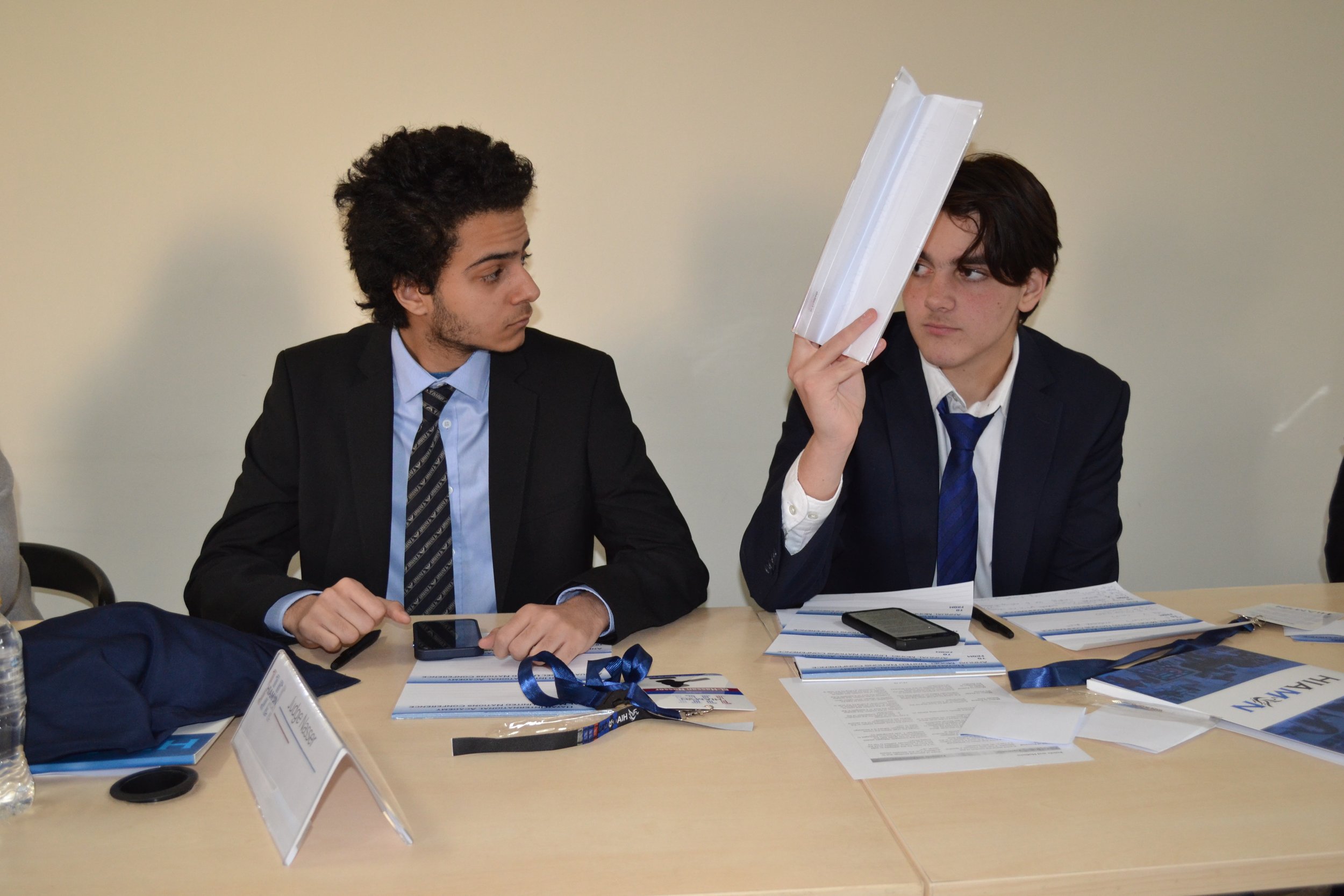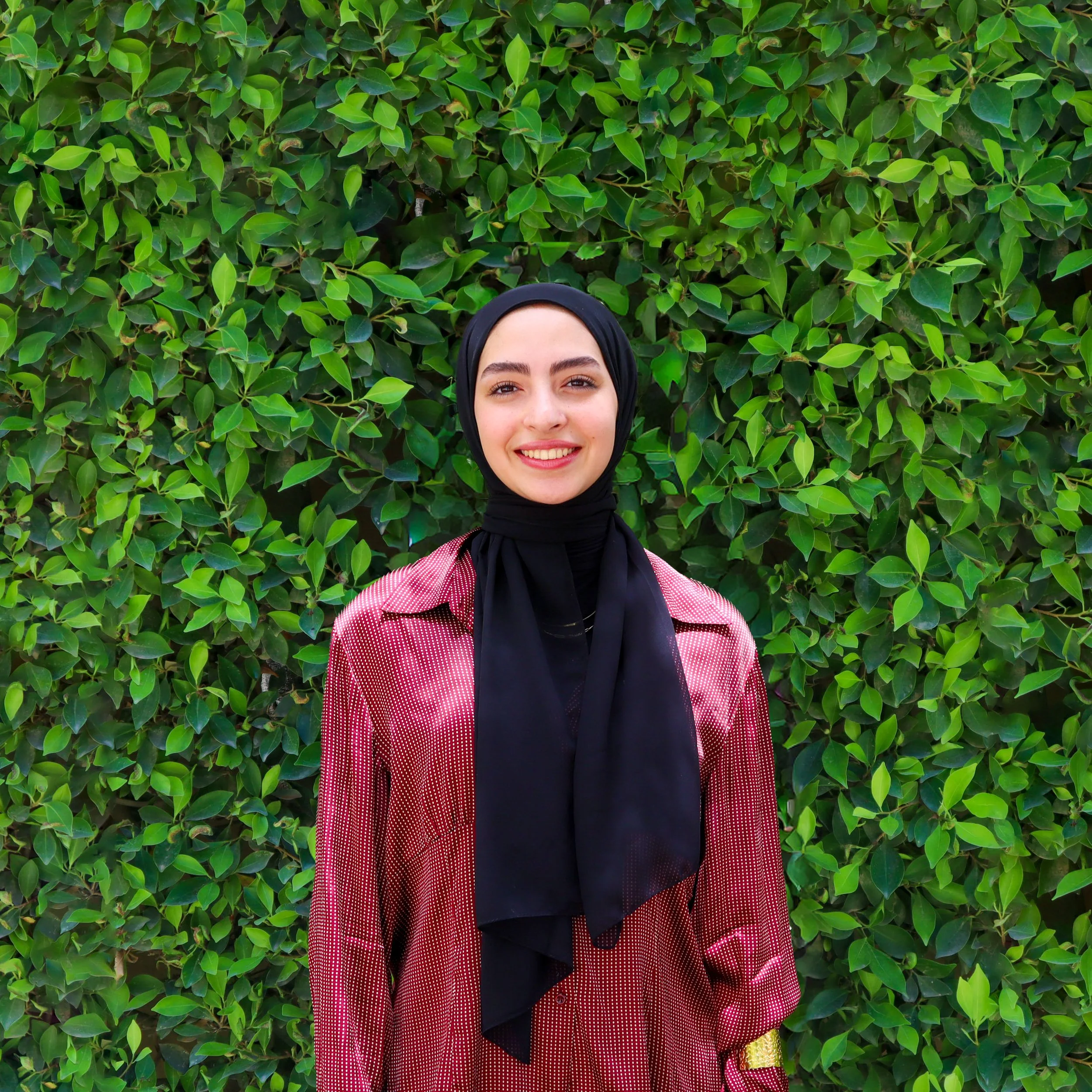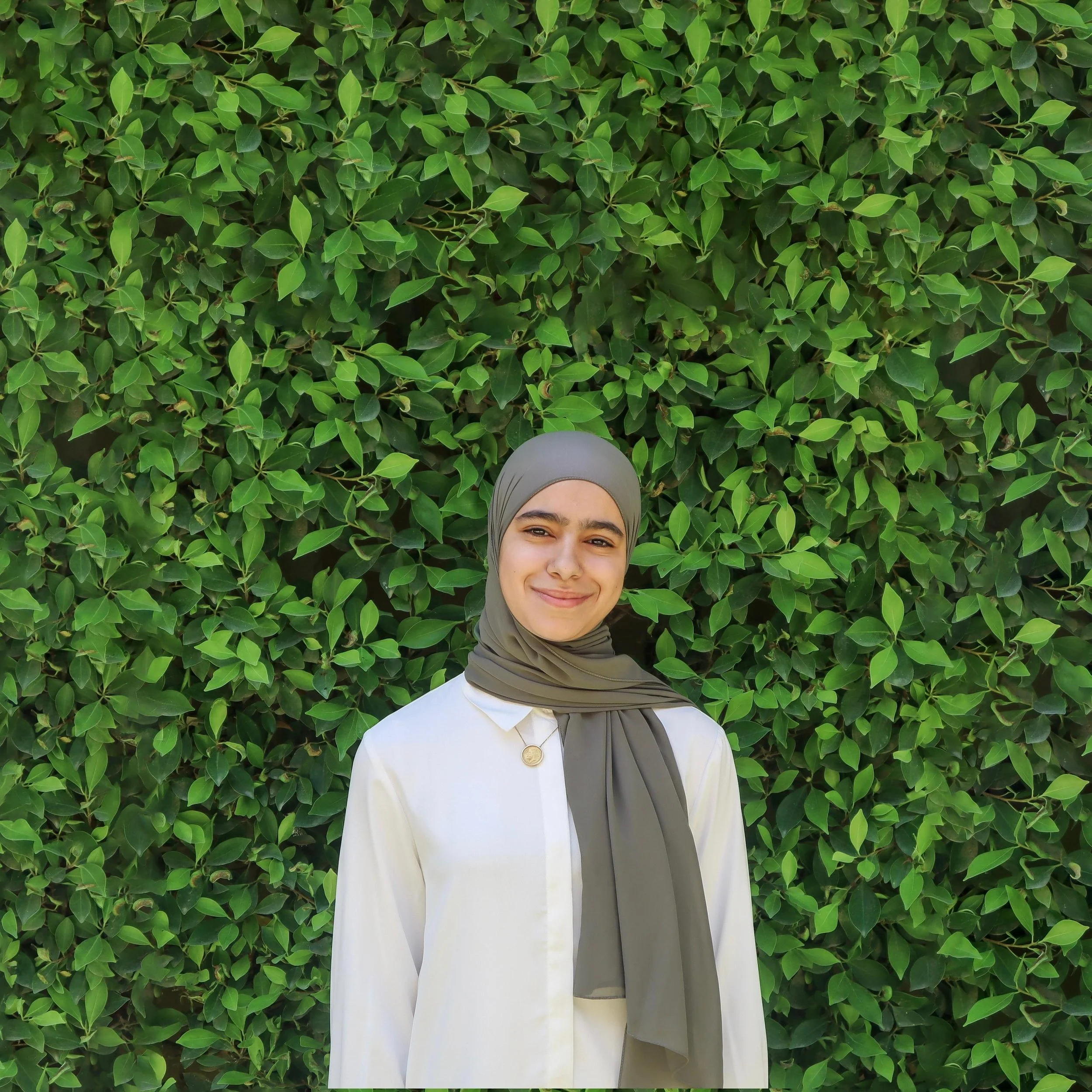International Court of Justice
Sumayya Zewail, President
Sara Tarek, Chair
Since the International Court of Justice’s establishment in 1945, it has been a testament to the power of united voices and opinions, the power that comes from each country's advocacy of their beliefs, and more importantly the power that accompanies the aligned voices of the judges in their judgments.
Similarly, HIAMUN ‘26's theme of Resonance represents this concept precisely. Two or more waves that, when aligned, have a greater output than each alone. Each advocate, each judge, and each delegate represents these waves, and my most distinguished chair, Sara Abdelsamad, and I are beyond excited to watch you all align in your ideas and opinions – and most importantly in friendships and motives of change. Apart from this, HIAMUN as a whole strives to be a conference where our voices resonate with others, and excite a chain of change and interest in battling oppression globally.
Sara and I have carefully picked two cases to assess during this year's conference, the first being Whaling in the Antarctic (Australia vs. Japan) which concerns the long-standing issue of illegal whale poaching by Japan, as alleged by Australia, and whether Japan had the lawful right to conduct their whaling operations under scientific premises. The second case, Oil Platforms (Iran v. United States of America), addresses the alleged violations of the United States of the Treaty of Amity after many counts of alleged breaches by both countries. These cases were chosen to challenge the members of the Court due to their rich scientific and historical background, and their precise application of international law. We are excited to watch how the members of the Court dive deep into and properly utilize these important assets in the present cases.
Through our conference and your preparation for it, my chair and I hope that each delegate, each advocate, and each judge can find their voice and use it to advocate for justice. Sara and I urge each Court member to reach out and ask for help when needed, and help us fulfill our role of guiding and encouraging you all to reach your pinnacles. Welcome to HIAMUN ‘26, where we hope to see you all serving justice, enjoying the conference, and most certainly, learning.
Sumayya Zewail, President of the International Court of Justice
Case 1: Whaling in the Antarctic (Australia v. Japan)
Case 2: Oil Platforms (Iran v. United States of America)

